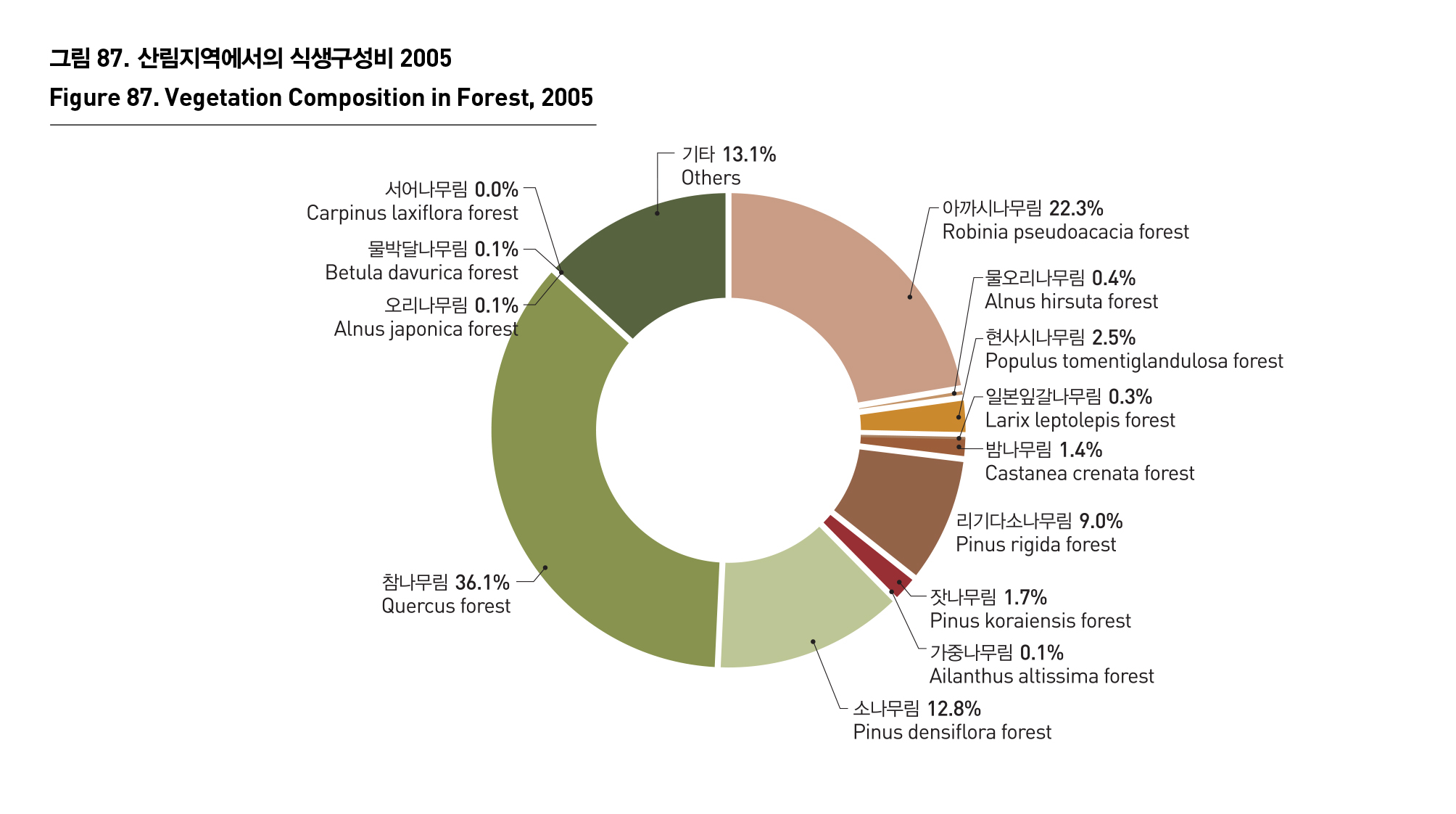-
환경
식생
-
식생
2005년 서울에서는 1일 11,170톤의 생활폐기물이 발생하였고, 64%는 산업용 대체원료나 유기성자원으로 재활용되고, 10%는 지역난방열을 회수하는 소각방식으로 처리되고, 나머지 26%는 수도권매립지에 매립방법으로 처분되었다. 시간이 갈수록 재활용과 소각이 늘고 매립이 줄어드는 방향으로 처리방법이 변화하는 추세이다.도시지역에 있어 식생현황은 야생동물의 서식지 확보 등 도시생태계 구성에 매우 중요한 기능을 담당한다. 서울시는 1999년 조사 후 제작했던 도시생태현황도를 2005년에 갱신하면서 변화가 있는 지역에 대하여 식생을 재조사하여 수정하였다.
시가화 지역을 제외한 녹지 및 오픈스페이스 지역은 서울시 전체면적의 약 42.2%에 해당되는데, 이 가운데 산림지역이 전체면적의 25.8%로 가장 넓으며, 초지 및 수역이 8.7%, 경작지 4.9%, 기타 2.8%이다. 산림지역에서는 신갈나무, 졸참나무, 갈참나무 등 참나무류림이 서울시 전체의 22.3%로 가장 넓게 분포하고 있으며, 아까시나무림 16.4%, 리기다소나무림 4.8%, 소나무림 4.7% 순으로분포하고있다. 초지 및 수역에서는 수면이 대부분이며, 귀화종 초본식생지역이 우세하다. 경작지는 밭, 시설경작지, 논의 순으로 넓은 면적을 차지하고 있다.
VEGETATION
Vegetation in urban areas plays a vital role in making up the urban ecosystem, such as securing the habitats of wild animals. In 2005, Seoul city had drawn a biotope map following its survey conducted in 1999, and then upgraded the map by reexamining the changed vegetation.
Green zones and open spaces represent about 42.2% of the gross area of Seoul. Forests make up the highest proportion, or 25.8%, grasslands and waters 8.7%, cultivated land 4.9%, and others 2.8%. Quercus forests such as quercus mongolica, quercus aliena and quercus serrata account for 22.3% of the forests, followed by 16.4% of the robina pseudoacacia, 4.8% of the pinus rigida, and 4.7% of the pinus densiflora. The surface of most grasslands waters is covered by water and naturalized herbaceous plants dominate the urban vegetation. Fields account for the most space in cultivated land, followed by land equipped with facility and then rice paddy.
출처 : 서울특별시, 도시생태현황도 정비, 2005
서울특별시 도시계획국 홈페이지 http://urban.seoul.go.kr



